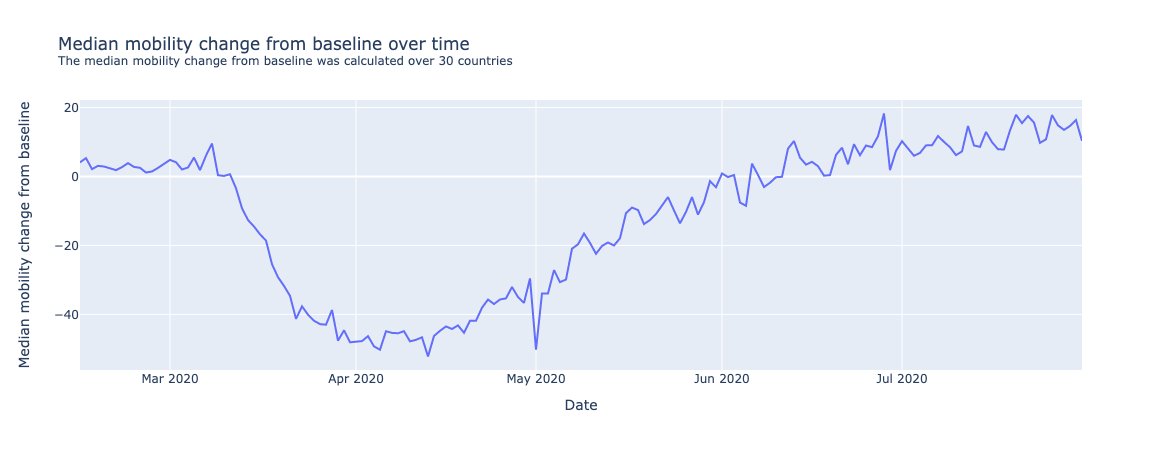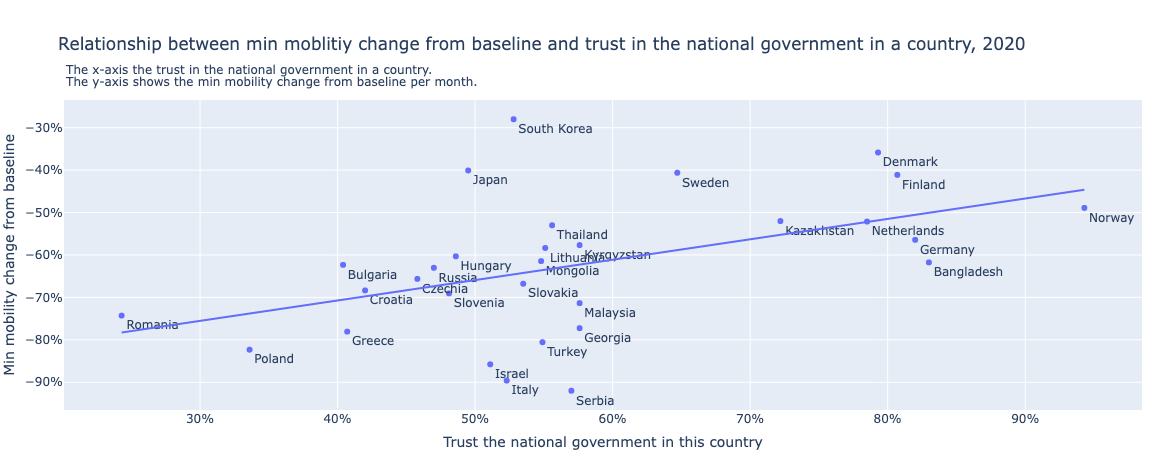How did the COVID-19 pandemic impact mobility?
The COVID-19 pandemic had a significant impact on mobility around the world, as various measures such as lockdowns and travel restrictions were implemented in an effort to slow the spread of the virus. This resulted in a halt to many aspects of daily life and disrupted society in many countries. In this dataset, we examine the changes in mobility from the baseline combining Parks, Transit stations, Retail and Recreational, and Workplace. First we will explore the median of these changes over time for all countries.

The data shows a sudden decrease in mobility, going from 9.5% on the 8th of March to -52% on the 13th of April, which coincides with the implementation of lockdowns mid-March.
From June onwards, there is an increase in mobility above the baseline, indicating that people were going out more than usual. This could be due to a combination of factors, such as people feeling a need to socialize after being confined for months, as well as the natural tendency for people to be more active and social during the summer months.
